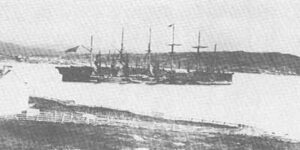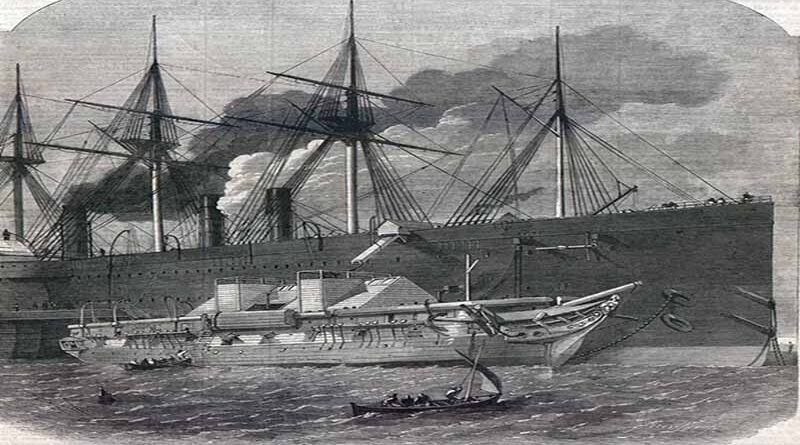The Trans-Atlantic Cable
In November 1858 issues of the Galway Vindicator and The Belfast News-Letter newspapers appeared announcements of the formation of “The British and Canadian Submarine Telegraph Company Limited”. The object of this company was to connect “the most important British North American colonies with Great Britain by electric telegraph”. The plan was to lay a telegraph cable between Ireland, and Quebec (via Newfoundland), and then extend the line to the Pacific Ocean as soon as possible. This was not an easy task – as prior attempts had proven.
By 1853 land telegraph lines connected much of Britain. A submarine cable also crossed the English Channel to France and another one linked England with Ireland, but communication between Europe and North America still was only possible by ship-borne mail.
By using naval and maritime sounding charts, it was determined that a trans-Atlantic cable route was possible along “Telegraph Plateau” between Ireland and Newfoundland; from Newfoundland, connections could be made to Nova Scotia and then to Canadian and American cities.
In 1857 an attempt was made, but ceased when the cable broke 300 miles from Ireland and was lost in 10,500 feet of ocean. The next summer, three more attempts were made with stronger cable. The last was successful and by 10 August 1858 messages were being sent back and forth – including ones to and from Queen Victoria and President Buchanan. In September, however, the cable failed and electronic communication between the continents ceased. Despite the failure, it proved that a trans-Atlantic telegraph was possible.
 On 27 July 1866, the steamship GREAT EASTERN reached Heart’s Content, Newfoundland, having successfully paid out its cable along the Telegraph Plateau route; the next day the submarine and land lines were spliced together, once more allowing messages to be sent between North America and Europe. Another line was established in September when a lost cable was retrieved and connected to the Newfoundland land line.
On 27 July 1866, the steamship GREAT EASTERN reached Heart’s Content, Newfoundland, having successfully paid out its cable along the Telegraph Plateau route; the next day the submarine and land lines were spliced together, once more allowing messages to be sent between North America and Europe. Another line was established in September when a lost cable was retrieved and connected to the Newfoundland land line.
Now obsolete in today’s world of instantaneous fibre-optic and wireless communications, telegraphy was the beginning of world-wide high-speed message transmission – and some of today’s high-tech communication cables still are laid along the “Telegraph Plateau” route.
By: Don Willcock,
The Peterborough Museum & Archives,
300 Hunter St E, Peterborough 705-743-5180
www.peterboroughmuseumandarchives.ca
Top Photo: “Loading Cable on the Great Eastern” is from the website atlantic-cable.com
Bottom Photo: “Great Eastern at Heart’s Content, Newfoundland” is from the website eastwaters.com




